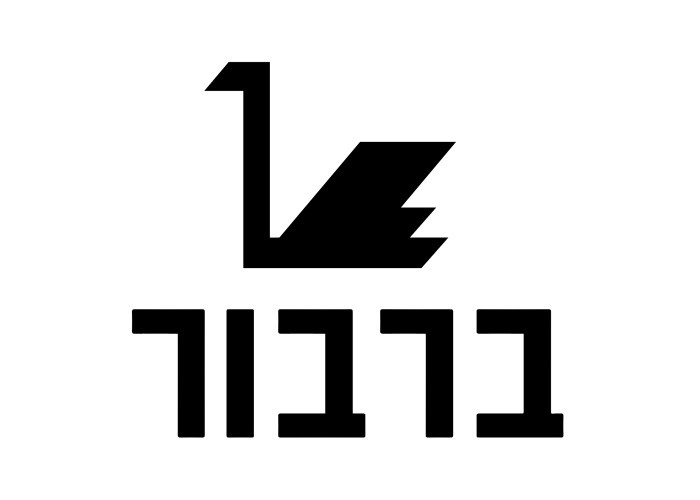In a special 3-part series, Asylum alum Abraham Kritzman, an artist and Barbur Gallery’s curator, talks about the gallery’s work, the attacks against it, and the team’s plans for the future, as they await the results of their appeal to Israel’s Supreme Court, and resuming their operations in a new location in Jerusalem.
Part 1- Fear and Censorship in Israel’s Art Scene: the Case of Barbur Gallery
This March, just as Israel was entering its Coronavirus shutdown, Barbur Gallery, a non-profit, artist-run community art gallery in Jerusalem, was evicted. Its closure marked the end of a years-long, politically-driven attack instigated by Israel’s national and local political leaders.
Since its founding in 2005, the gallery has been run collaboratively by a changing team of artists and curators who live and work in Jerusalem, and has established itself as a small yet versatile cultural institution. As testimonies presented in court have recently shown, the Israeli art world widely attests to the gallery’s unique and longstanding contribution to the cultural landscape of Jerusalem, and of the country as a whole.
Over the past 15 years, the gallery has demonstrated a longstanding commitment to showing work that resides outside the mainstream art market scene, and to advancing the exploration of the many functions of a community gallery.
Yet over the past three years, to the great dismay of the Barbur team (of which I am a part), the gallery’s name has become a political lightning rod in Israel. For many, the gallery has come to symbolize the struggle for free speech in the current Israeli political reality. The closure of Barbur Gallery is the latest demonstration of how any artistic institution that does not abide by the cultural and political paradigm advanced by the government may be punished.

Installation view: Dynamo, Drawing Biennale 2019, curated by Abraham Kritzman. Photo: Elad Sarig
Barbur’s Story in Short
Fifteen years ago, Barbur was established by a group of young artists, fresh graduates from Jerusalem’s Bezalel Academy of Art and Design, who sought to continue their lives in the city rather than migrate to Tel Aviv and its art market. Barbur was conceived as a non-profit gallery where programming would be liberated from commercial constraints. A place that would serve a community of creative workers from across disciplines.
At the time, no comparable venue existed in Jerusalem. Supported by the neighborhood administration center (a local community center) in Nachlaot, the group was allotted space by the municipality – a ramshackle shed in an alley by Jerusalem’s main market, which was then being used for storage by the city’s maintenance department.
Nachlaot is one of Jerusalem’s most picturesque neighborhoods – a tangled web of small alleys, arches and wells adjacent to the Mahane Yehuda Market, beloved by both residents and visitors. Famous for its multitude of small synagogues, it is a perennial favorite of university students, and holds a celebrated place in the cultural history of Jerusalem. Many diverse communities call Nachlaot home, and it has for the past decades bound together students and seniors, families from a range of backgrounds, market workers from East Jerusalem, lost tourists in need of a toilet, people who are devoutly religious and devoutly secular, migrant workers from across the world, asylum seekers, new immigrants, and more.
From its inception, Barbur structured its activity to be open and accessible to a broad audience. All the events are free of charge. The exhibitions are organized by the gallery’s members, a dynamic group of artists with a shared goal of exhibiting art we see as relevant, promoting discourse among cultural workers, and facilitating the open exchange of ideas. The exhibitions don’t need to adhere to the dictates of commerce, and are chosen and curated with the goal of welcoming intersectional artistic dialogue, and encompassing variety in medium, gender, and social affiliation. We hold shows by a wide range of artists – established and emerging, young and old, from Jerusalem and from other parts of the country. As part of Barbur’s goal to reexamine the function of a ‘community gallery,’ it has always celebrated the commitment of artists to their work. Regular exhibitions are supplemented by other gallery-run operations: festivals, readings, screenings, an annual residency program, a long-standing platform for sound artists, and one of Jerusalem’s first community gardens.
Beyond regular opening hours, the gallery opens its doors to ‘outside’ activities initiated and run by members of the local community in search of a space to gather and/or hold audiences. Over the past 15 years, the gallery has hosted a vast menagerie of events, serving a broad range of (often conflicting) tastes. The variety of these events has been truly diverse, ranging from the political to the mystical, from body to word, from purely ‘artistic’ to loosely connected: ceramics fairs, carnival organizers, Russian and Persian poetry evenings, yoga classes, NGOs that promote critical discourse in a range of fields, and a therapist co-op initiative, to name but a few.

A weekly elderly painting class led by artist and Barbur member Michal Rapaport on their break
We have since the start, considered these events an organic expression of our community’s interests, and for us, hosting them is an expression of the broad role of a community gallery. As long as an event does not promote violence, racism or discrimination, (as we best understand these words) and is not affiliated with any parliamentary or municipal party (this would be illegal for an NGO in Israel), we are happy to provide whatever space we can.
This policy of hospitality has been a major reason for Barbur becoming well-known within Israel’s arts communities as an example of a cultural institution serving the community it is part of. It is also what allowed us to be used over the past few years as a political punching bag.


